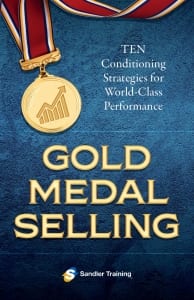Achieving Balance: How Hormone Health Improves Personal Performance

It’s precisely for this reason that today, various health remedies are in place to help address the need for better hormone health. As one strives to keep their entire body in check, their hormone health should also be cared for.
Here’s why:
1. It Controls Overall Organ Functions
By the nature of what hormones are, it has the task of controlling the overall organ functions. Hormones travel all over the body. When they reach and bind to receptors, they lock together. When this process is completed, the hormones transmit the specific messages that they’re responsible for. Henceforth its ability to control the various functions of organs.
This is important so that every day, the human being can perform even the basic tasks that you’re supposed to achieve. With this, healthy hormones can accomplish the following:
- The growth and development of the body
- The reproductive processes of the human body
- The various sexual characteristics that distinguish male from female
- The ability of the body to store and process energy
Note that while hormones are widespread in the body, these don’t affect the human body in entirety. Every type of hormone has its respective function, depending on which organ or tissue it’s meant to send a message to. Because hormones perform this very important function for the human body, all the more that the clamor for balanced hormones now exists.
This is precisely the reason why it’s very important for individuals to check from time to time, their hormone levels, to ensure that all is well with them. Thankfully, products like HealthConfirm’s Hormone Vitality Complete have made it possible now to have hormone level measurements done at home, through their kits. This advantage gives you no reason not to be this prudent also about regularly checking your hormone levels.
2. It Helps Control How You Feel
Personal performance also includes one’s ability to process emotions or your ability to feel. If hormone health is poor, this also means that the level of hormones is disrupted. When this happens, you’ll also begin to notice changes in your mood. Imbalanced hormones lead to more severe mood swings. This can hinder even your behavior and your overall outlook for the day.
For example, even after a good night’s sleep, you notice that you’re still feeling weak and moody as you wake up. This may not be a problem of lack of rest anymore. It could also be a deeper problem, such as poor hormone health. With a better balance of your hormones, you end up happier.
As people explore ways to restore hormonal balance, it helps to understand the range of treatment options beyond testing and lifestyle tweaks. One option some patients and clinicians consider is bioidentical hormone pellet therapy. These are small, plant-derived pellets implanted under the skin that release hormones steadily over months and can ease symptoms like mood swings or low energy. For a balanced overview of the potential benefits and limitations, see https://revolutionhealth.org/blogs/news/pros-and-cons-of-hormone-pellets, which explains convenience, personalization needs, and suitability considerations. Reviewing pros and cons with a qualified clinician helps determine whether pellets are a sensible choice for individual health goals.

No matter how much you exercise or control your diet, if your metabolism is poor, this could also affect your ability to maintain a healthy weight. One of the functions of healthy hormones is its ability to control your metabolism.
This function stems from the hormones of the thyroid, which were built precisely for that purpose. Along with metabolism, other functions of healthy thyroid hormones include:
- Regulating weight
- Managing hair growth
- Determining energy levels
- Controlling the inner temperature of the body
4. It Boosts Brain Function
Good hormonal health is also necessary for the brain to function adequately. Remember that the brain doesn’t merely work on its own. It’s reliant on its connections and relationships with the other organs of the body. One of these are the hormones, or the critical messengers so that the brain can process various information, depending on the specific performance that it’s meant to do.
For instance, if your hormone health is poor, specific cognitive issues can arise. When this happens, your overall personal performance is also affected. You may not be able to do the tasks you were accustomed to, not just in your job, but even in other aspects of your life.
Examples of these adverse effects of how poor hormone health affects your brain would include:
- Having only a short attention span
- Quickly losing one train of thought
- Experiencing frequent short and long-term memory gaps
- Changes in creative coordination ability
You need to think of your brain as an operating system of a computer. To fuel its functions, excellent hormone health is necessary. The healthier your hormones are, the better your overall performance is.
5. It Keeps Your Body Healthy
When your body isn’t healthy, then it’s expected that you wouldn’t be able to function to your full potential. If you notice that you’re also getting sick more frequently, this could mean that your hormones may also be of poor health.
A proper balance of your hormones is needed to keep the immune system healthy. That way, you can better function and perform, as your body’s innate ability to ward off bacteria and viruses is stronger. If you are seeking a simple, non-invasive at-home option that measures key hormones and pairs results with pharmacist guidance, consider saliva hormone testing: https://greenhillrx.com/blogs/news/saliva-hormone-testing. This advantage gives you no reason not to be this prudent also about regularly checking your hormone levels.
Takeaway
It’s normal for the human body to experience instances when certain hormones are depleted or that their overall function is affected. While the effects may sometimes be minor, this isn’t to be taken lightly. After all, good hormone health is needed for the body’s performance to be excellent. The more that you’re able to understand about hormone health after reading through this, the more that you can step forward with ensuring that your body’s overall hormone health is excellent.






 Whether you work in an office building or from home, staying on task can be difficult. The distractions may vary – a barking dog versus a chatty coworker – but they’re still there.
Whether you work in an office building or from home, staying on task can be difficult. The distractions may vary – a barking dog versus a chatty coworker – but they’re still there.